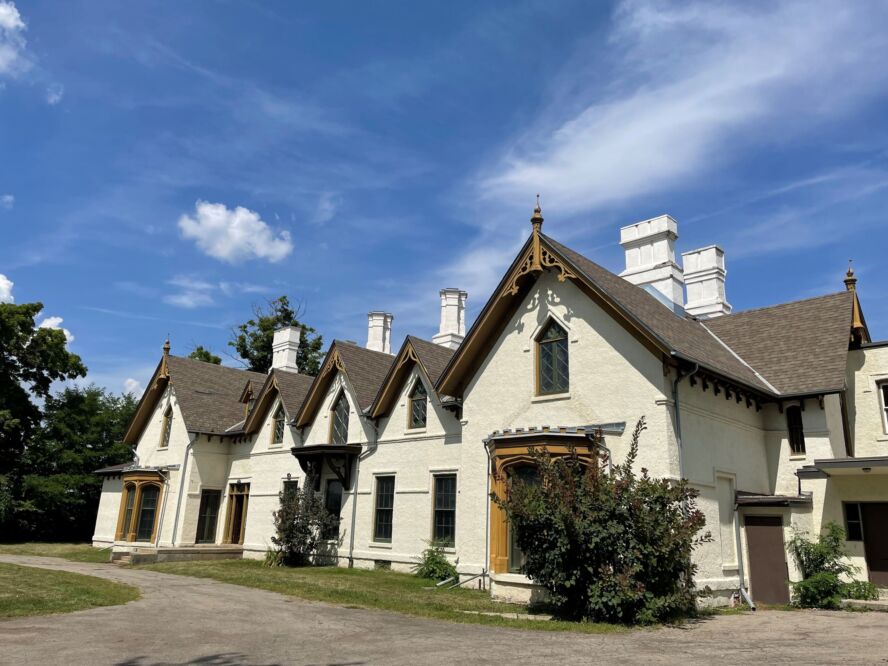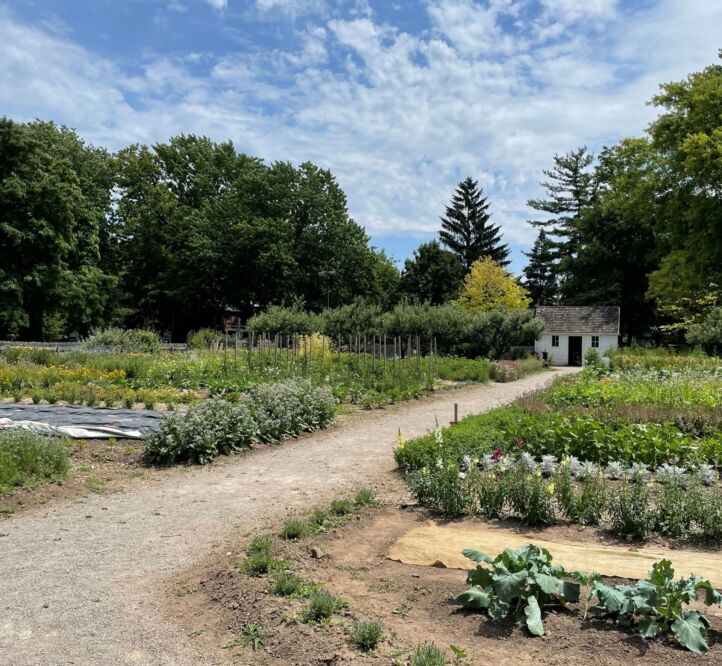Museums and Historic Sites (Taylor’s Version)

Dundurn National Historic Site
By Meredith Leonard, City of Hamilton and AASLH Educators and Interpreters Committee
Embracing eras as an interpretive tool to expand our stories, reach, and relevance
I’m sure I wasn’t the only Swiftie and card-carrying history nerd to be excited and a little intrigued when I learned about Taylor Swift’s Eras Tour concept. As a historian, I get eras; they’re something we’re very familiar with in the heritage and museum world and I was fascinated to see the theme being employed as a storytelling framework on such a grand scale.
The Eras Tour is a cultural and economic phenomenon (which some museums took advantage of: check out how Nashville sites capitalized on the thousands of tourists who came to the city to catch a show). There are many reasons and circumstances that have led to its unprecedented success. An event this successful, appealing, and monumental has inherent lessons for industries and fields of all sorts, especially those related to entertainment, leisure time, and community, like museums. As a thought exercise and concept to deconstruct, the Eras Tour got me to thinking:
Why does this tour in particular resonate so widely? Can we capture some of this energy and employ eras as a connected and powerful interpretive and framing concept in museum work?
Long Story Short
The Eras Tour is a comprehensive overview of Taylor’s music and artistic practice. It captures change, continuity, and the value of multiple stories to provide a complete, complicated picture of growth, contradiction, identity, and the fluidity inherent in art. The continuum of human experience and emotions covered in this encyclopedic look at Taylor’s career means there are entry points for fans and audience members of all kinds. Maybe Red didn’t resonate for you, but you’re all about Reputation; there are so many different musical styles, emotions, and places to connect, thus accommodating intergenerational audiences with vastly different life experiences to find something personal that speaks to their lives.
When we’re at our best, shouldn’t museums do the same? We can present a comprehensive picture of the collective experiences of a place, with multiple points of entry and connection, all while giving us space for nostalgia and acknowledging that change is natural and inevitable. Like the audiences at the Eras Tour concerts, museum staff and visitors can do this work and have these experiences together, in and as a community.
All Too Well
As part of my job as Senior Curator, Learning & Interpretation at Hamilton Civic Museums in Hamilton, Ontario, Canada, I’m engaged with the work of interpretive planning for a collection of historic house museums and sites. As such, “eras” as an interpretive concept simplified a framework that we’re working though institution-wide, embracing wider histories and telling more complete and inclusive stories. Traditional historic house museums that chronicle the experience of one family during one specific time period are not without value, but as our communities, audiences, and priorities are changing, it is worth examining how we can expand the relevance of our sites, using our unique resources to tell more universal stories.
Rather than spend the time, money, and sweat equity on exquisitely crafting a rarified space that produces a narrow snapshot in time that isn’t integrated into the continuum of the history of a place, we could work towards expanding our interpretation to encompass all of the eras of a place and position our historic spaces as part of a continuum, connected to other sites, stories, and people.
In doing so, we can embrace the complexities, grapple with the questions and contradictions, and create spaces that better reflect and speak to entire communities. If Taylor can embrace diverse experiences and moments in life, ranging from failure and success through a worldwide tour, our capable and creative museum staff can create a microcosm of this in our historic spaces while working with communities and engaging in productive conversations.
…are we ready for it?
I’ve used this inspiration in my own practice when thinking about, planning for, and engaging with interpretive planning at our sites like Auchmar Manor House and Dundurn National Historic Site. For much of their history as civic museum and sites, the interpretive focus for our museums has largely been on the prominent wealthy families who called these spaces home. A valuable story and era in the place’s history for sure, but far from the only one.
Rethinking interpretation at our carefully curated historic sites can be intimidating, but offers so many opportunities and possibilities that it is well worth doing the hard work, moving through the inevitable discomfort, and embracing a “yes, and” mindset. This is quite an undertaking for one site, let alone a collection of ten museums in Hamilton, so we knew we needed a road map to help our team approach this work in a thoughtful and consistent way. Following the launch of Hamilton’s Civic Museum Strategy in November 2021, staff engaged in crafting an overarching interpretive strategy that would guide public-facing activities at the museum sites, in community-based projects, and in collaborative partnerships. This strategy emphasized universal themes that connected our sites and the spaces between them to each other and to our community, providing a broad interpretive mandate that would support telling multiple stories from multiple perspectives.

Auchmar Manor House
Begin Again
Auchmar Manor House has provided a kind of laboratory for some of this work and thinking within the Hamilton Civic Museums network. While significant capital work on the site is ongoing, we’ve had the opportunity to think through new ways of providing public access to the site and the stories it holds. We’ve started with a bespoke tour program as well as a short documentary video project about the Sisters of Social Service, with additional visitor experiences in the works. This brief overview of the site’s eras provides a glimpse into the possibilities inherent in a more holistic interpretation of Auchmar and the land it sits on.
The City of Hamilton, Ontario, Canada is situated upon the traditional territories of the Erie, Neutral, Huron-Wendat, Haudenosaunee, and Mississaugas. Auchmar began as so many historic sites do, as a family home; that of prominent businessman, political figure, and writer Isaac Buchanan and his family. Built in the early 1850s, Auchmar was notably the site of large Emancipation Day celebrations, in which members of the Black community gathered to mark the anniversary of the Slavery Abolition Act of 1833, which took steps towards ending slavery in the British Empire. In a not-unfamiliar story, Buchanan lost much of his fortune later in life and the estate’s ownership changed hands, although eventually Isaac’s son James re-purchased the property. James’s sister Elsie operated a home for single mothers at Auchmar, before it was sold again to the Young family. During the Second World War, the Young’s rented their home to the Royal Canadian Air Force, which used it as a convalescent hospital for their members. In early 1946, the home’s longest tenants, the Sisters of Social Service, a Catholic religious order from Hungary, took up residence at Auchmar, using the site as a convent, home, and retreat center. The Sisters worked closely with immigrants and newcomers to the city, many of whom worshiped and accessed services at Auchmar. The grounds around the home and outbuildings are also significant and home to a number of monument trees, while also providing an excellent example of a historic landscape.

Garden at Dundurn
The buildings and the property are each one of and all of these stories together; collectively, all of these eras tell a comprehensive story of the site and by extension, the people who used it and the city that surrounds it. Auchmar’s interpretive programs are embracing all of the home’s eras as part of the whole story of the place and it is our hope that members of our community can find themselves in the story of one of Auchmar’s eras, emphasizing the ways in which we are connected across local history. Interpretation that tells all of these stories and weaves them together is a richer, multi-faceted experience that embraces complex narratives, changing uses and societal needs. Together, the eras are more powerful, informative, and relevant than any one could be on its own.
[Be] Fearless
Traditional narratives and approaches, like a a historic property restored to a specific year and telling a very particular story, may not be the best or most visitor-centered approach for museums today and into the future. Embracing the whole history of the land and site offers the opportunity for more connections with community groups, more ways for people to see themselves in spaces and the stories told there, and even more opportunities to consider diverse use of spaces. People, history, and place are complicated, multi-faceted, and contradictory; instead of simplifying and presenting a single story, we can take a cue from Taylor, lean into the messiness of it, and share more of our history and our process with our audiences.



